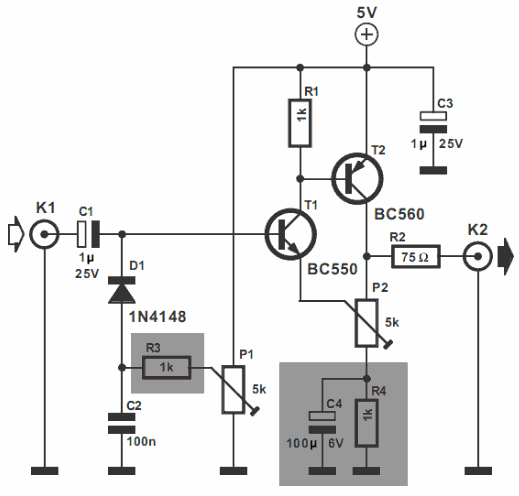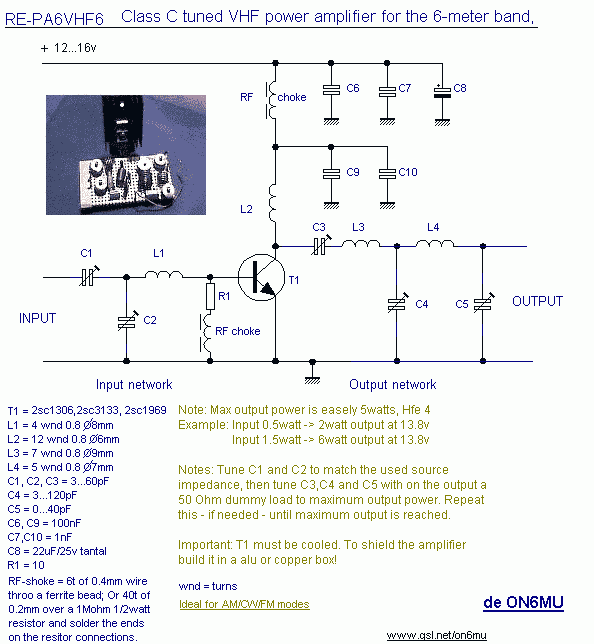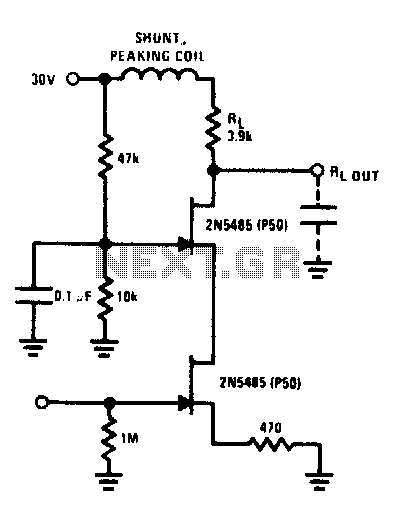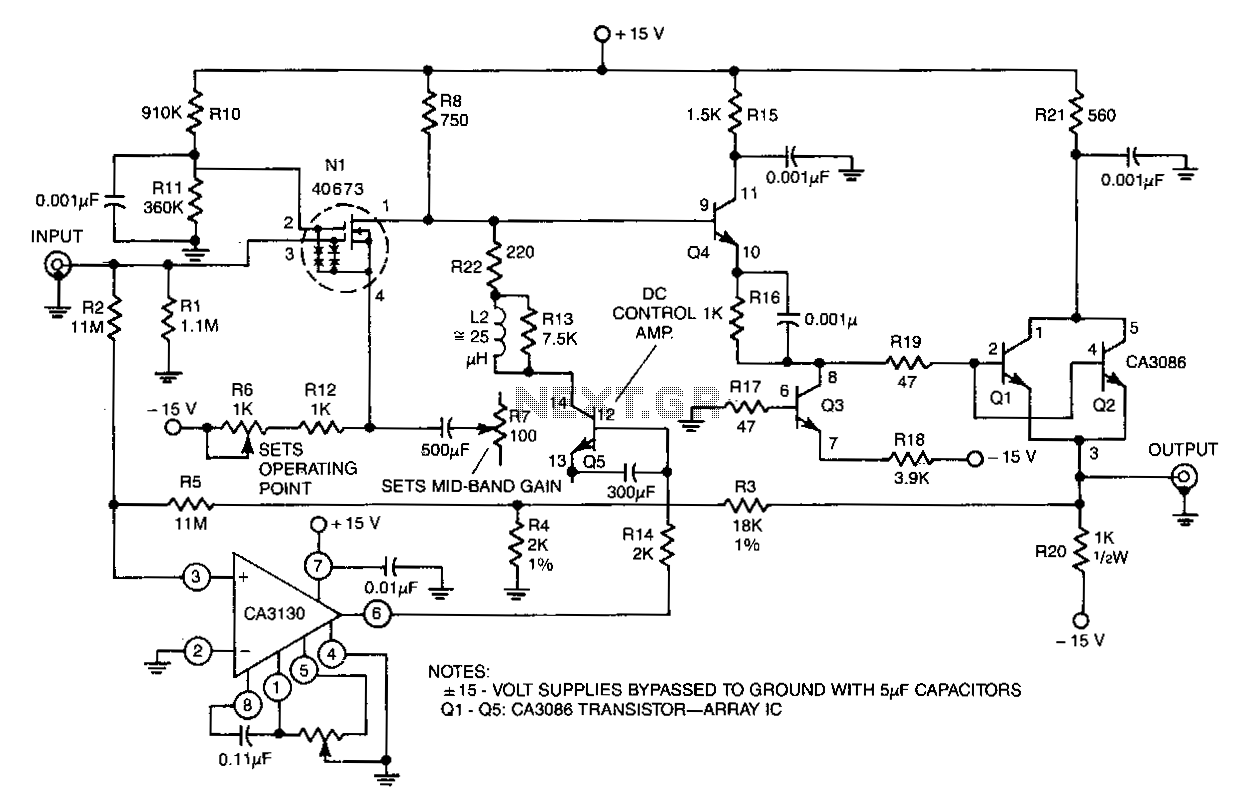
50 Watt Amplifier
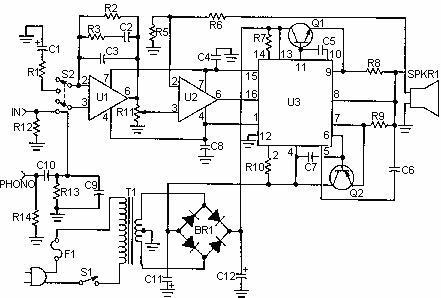
This is a handy, easy to build general purpose 50 watt amp. The amp has an input for a radio, TV, stereo or other line level device. More: It also has a phono input for a record player, guitar, microphone or other un-amplified source. With the addition of a low pass filter at the input, it makes a great amp for a small subwoofer.
The described circuit is a general-purpose 50-watt audio amplifier designed to accommodate various audio sources, including line-level devices such as radios, TVs, and stereo systems. The amplifier's versatility is enhanced by the inclusion of a dedicated phono input, which allows for connection to unamplified audio sources like record players, guitars, and microphones.
The circuit typically employs a power amplifier stage capable of delivering 50 watts of output power, which is suitable for driving small to medium speakers. The input stage may consist of operational amplifiers or transistor-based circuits that provide necessary gain and impedance matching for the audio signals. A key feature of this amplifier is its low-pass filter, which can be integrated at the input stage. This filter is particularly beneficial when the amplifier is used with a subwoofer, as it allows only low-frequency signals to pass through, effectively enhancing bass response while eliminating higher frequency noise.
In terms of components, the amplifier circuit will usually include resistors, capacitors, and inductors that define the frequency response and stability of the amplifier. The power supply section is critical, as it provides the necessary voltage and current to the amplifier stages, typically requiring a regulated power supply capable of handling the load demands at 50 watts.
Overall, this amplifier design is characterized by its simplicity and effectiveness, making it an excellent choice for hobbyists and audio enthusiasts looking to build a reliable audio amplification solution.This is a handy, easy to build general purpose 50 watt amp. The amp has an input for a radio, TV, stereo or other line level device. It also has a phono input for a record player, guitar, microphone or other un-amplified source. With the addition of a low pass filter at the input, it makes a great amp for a small subwoofer. 🔗 External reference
The described circuit is a general-purpose 50-watt audio amplifier designed to accommodate various audio sources, including line-level devices such as radios, TVs, and stereo systems. The amplifier's versatility is enhanced by the inclusion of a dedicated phono input, which allows for connection to unamplified audio sources like record players, guitars, and microphones.
The circuit typically employs a power amplifier stage capable of delivering 50 watts of output power, which is suitable for driving small to medium speakers. The input stage may consist of operational amplifiers or transistor-based circuits that provide necessary gain and impedance matching for the audio signals. A key feature of this amplifier is its low-pass filter, which can be integrated at the input stage. This filter is particularly beneficial when the amplifier is used with a subwoofer, as it allows only low-frequency signals to pass through, effectively enhancing bass response while eliminating higher frequency noise.
In terms of components, the amplifier circuit will usually include resistors, capacitors, and inductors that define the frequency response and stability of the amplifier. The power supply section is critical, as it provides the necessary voltage and current to the amplifier stages, typically requiring a regulated power supply capable of handling the load demands at 50 watts.
Overall, this amplifier design is characterized by its simplicity and effectiveness, making it an excellent choice for hobbyists and audio enthusiasts looking to build a reliable audio amplification solution.This is a handy, easy to build general purpose 50 watt amp. The amp has an input for a radio, TV, stereo or other line level device. It also has a phono input for a record player, guitar, microphone or other un-amplified source. With the addition of a low pass filter at the input, it makes a great amp for a small subwoofer. 🔗 External reference
